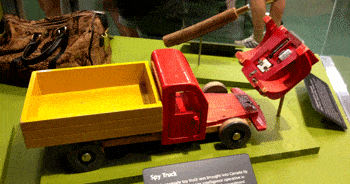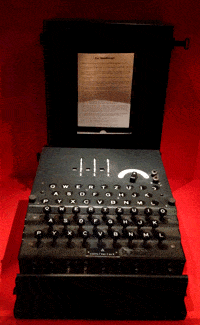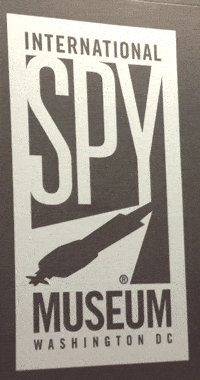Ever wanted to be a secret agent? Got a hankering to live a double life? Well this leg of my Churchill Fellowship found me at the International Spy Museum in Washington DC to find out all about the life of spies and how classrooms across the world have experienced this content presented via video conference. I must admit, this visit intrigued me as the educational content presented is completely unique; where else can you see a real spy gadgets or talk with an ex-CIA case officer about life as an agent? The pedigree of the International Spy Museum is highly authentic; most of the board has worked in the covert industry as senior executives and the museum artefacts are genuine materials. Throw in some pop culture references from 007 for the students and Get Smart for the adults and you’ve got quite a engaging topic!

Concealment devices housed at the International Spy Museum
Through the day I spent time with Jacqueline Eyl and Lucy Stirn, discussing how the museum reaches it’s remote audiences. Whilst there are obvious overtones of covert operations the real essence of the video conference lessons revolve around STEM, critical thinking, judgement, logical reasoning and historical perspectives. Efforts are made to make the topic relevant to the student’s personal lives connecting the delicate balance between security and civil liberties. There are 4 video conferences available:
1. Spy Science Operation STEM – Students become Technical Operations Officers at the CIA trying support an agent in the field, using their knowledge of science and technology. Students build
a signalling device from LED lights, a battery, paperclip, and chewing gum.
2. Operation Code Cracker which challenges students to find a mole in their spy agency by revealing codes and ciphers to lead them to their conclusion.
3. The Spy’s Eye View: Students step into the secret world of spying in a briefing with a former CIA Case Officer.
4. Cuban Missile Crisis Simulation. Students become all source analysts at the CIA in October 1962 and analyse primary documents and U-2 photographs to advise President Kennedy at various
stages of the Crisis.
Chroma key is used to support the session as well as exhibit pieces from the onsite galleries. Aligned to Common Core standards, the sessions are ideal for teachers wanting to extend their classes knowledge on a particular subject or simply immerse their students in a topic that is sure to grab their attention.

Captured Enigma Machine; World War II
As a visitor I couldn’t help but get immersed in the detail of the experience. When you enter the museum you are given an alternative persona which you must memorize as a cover as you walk the museum…. you don’t want to be discovered! A variety of installations are presented including hidden transmission devices, assassination weapons, ciphers and historical pieces on espionage dating from Egyptian times right through to the present day. A sobering section on the information age is also presented in detail – what would happen in a cyber-attack on critical infrastructure? Plus the experience at Operation Spy was great fun 🙂

What a fantastic visit! With the Washington DC leg of this trip done it is now time to fly to New York to learn how science education via video conference is being practiced in the Empire State. More to come!
All the best,























Comments